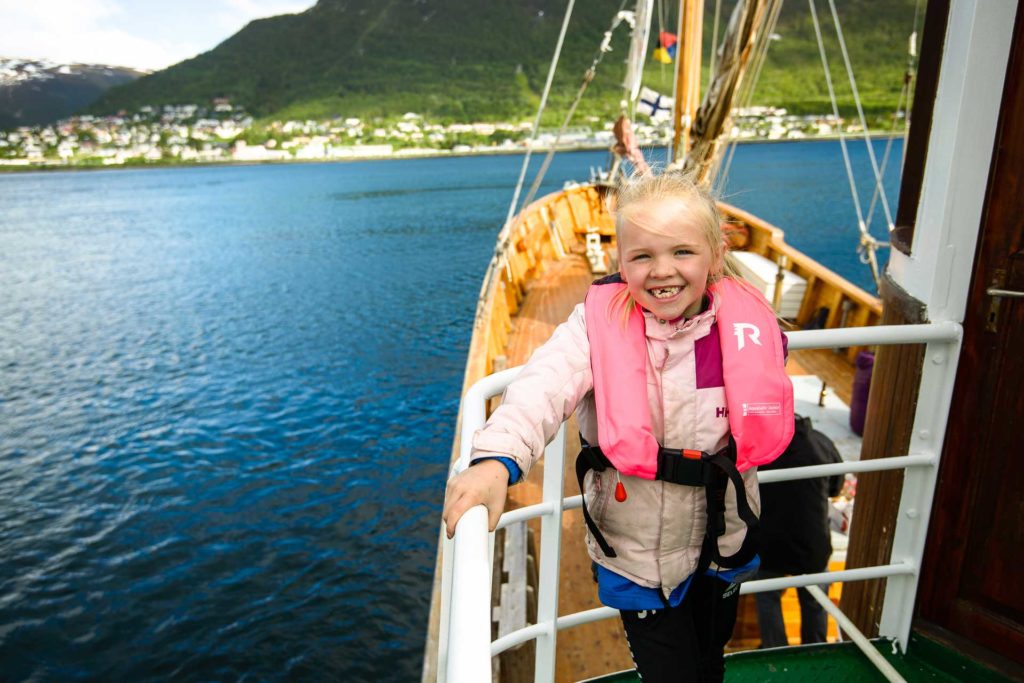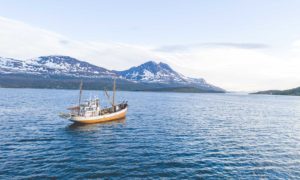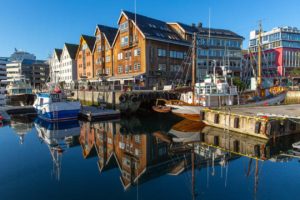>21°C (>70°F): About as warm as it gets in Tromsø. Trousers, shorts or skirt will be fine. A sweater or light jacket available. The wind can still be cold.
15-20°C (59-68°F): Just above the average for a regular summer. Mostly normal clothes are fine here. Trousers, sweater and it would be good to have a light jacket.
10-15°C (50-59°F): Average summer and warm spring/autumn. Recommended to have some warmer clothes available. Either in the form of woollen underwear, or a thicker sweater/jacket. Some guests also prefer light scarves, hats and mittens.
04-10°C (39-50°F): Typical spring and autumn temperatures. Sometimes even on a summer day. Here we recommend woollen underwear and trousers. Some may prefer wind-proof trousers as well. On the upper body, wear woollen underwear and a woollen sweater. A good jacket is also important here. Scarf, mittens/gloves and hat.
-4 to +4°C (25-39°F): Common winter temperatures outside the middle of the season. Here you will need several layers of warm clothes. Wool is very good because it transports moisture away from the body, it insulates and is breathable. In other words, you stay warm for a long time with several layers of wool. Down is also very effective, but it may be exposed to precipitation in the form of rain. Then it is recommended to have Goretex jackets or similar to pull over thinner down jackets. Large hats that cover the ears, lined mittens or gloves, and scarves are also recommended. Alternatively, you can wear a balaclava or similar.
<-4: °C (<25°F): It is essential to dress well when the temperatures are several degrees below zero. Wear several layers of wool. Ski pants or other trousers designed to withstand cold and snow. Down jackets that you can draw tight. A scarf or the like to cover your face if it is windy. Mittens are warmer than gloves. You can then have all your fingers together, which heat up the air in layers and provides insulation.
Remember that it feels colder at sea than on land, and you will be more exposed to wind. We also have thermal insulation suits on board that you can borrow free of charge. You should also consider your own experience of how much clothing you will need.






